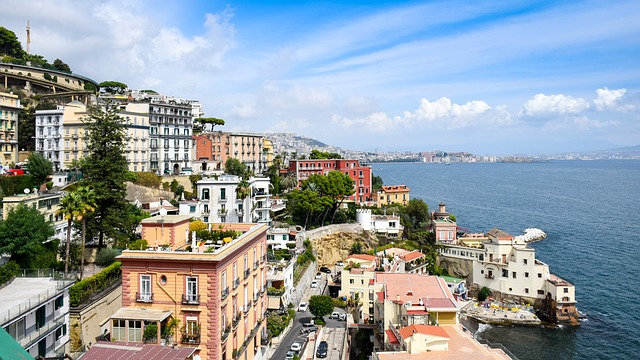By Tim Lambert
Ancient Naples
The city of Naples was founded by the Ancient Greeks, who settled in southern Italy. Soon Naples became a busy and important port. However, the Romans conquered Naples in 326 BC.
Under Roman rule, the port of Naples continued to thrive and rich Romans built holiday villas on the nearby coast. However, during a Roman civil war in 88-82 BC, a man named Sulla and his forces occupied Naples and massacred many of the inhabitants. Yet with the return of peace, Naples flourished again.
In the 4th century, the Roman Empire split in two. Then in the 5th century AD, the western half of the Roman Empire was invaded and it ended completely in 476 AD. Italy was left in the hands of Germanic peoples.
However, the eastern half of the Roman Empire survived. (We know it as the Byzantine Empire). The Byzantines were determined to recapture southern Italy. In 536 AD they laid siege to and captured Naples. It then became a duchy with a duke.
Gradually Byzantine rule weakened and in 645 a native Neapolitan named Basilio became Duke of Naples. In the following centuries, Naples thrived and trade with other places around the Mediterranean flourished.
Medieval and Renaissance
However, the Normans had arrived in southern Italy. In 1139 the Normans conquered Naples and it became part of the Kingdom of Sicily (which included southern Italy). Under the Normans, Naples took a back seat to Palermo although it remained prosperous. For a time Naples was ruled by the German emperor. Naples University was founded in 1224. However, in 1265 Charles of Anjou conquered the city. Then in 1442, Alfonso of Aragon (in Spain) became ruler of Naples.
In the 16th century, Naples was part of the great Spanish Empire. At first, Naples was prosperous and it grew rapidly. By 1600 Naples was the largest city in Europe and it had a population of around 300,000.
However, in the 17th century, the situation turned sour. In the 17th century, Naples suffered an economic depression. Discontent in Naples grew due to heavy taxation. Finally, in 1647 the city rose in rebellion. However, in 1648 the Spanish managed to restore order. Then in 1656, Naples was devastated by the plague.
Then in 1734 Sicily and southern Italy (including Naples) became an independent kingdom again. Once again Naples flourished. However, in the 1790s all of Europe including Italy was rocked by the events that followed the French Revolution. In 1799 the French army occupied Naples and they created a republic.
Modern Naples
With the defeat of Napoleon in 1815, the old order returned to Naples and the rest of Italy. The kings of Naples imposed a repressive regime. In 1820 there was a revolution in Naples and constitutional government was introduced.
However, in 1821 the Austrian army entered Naples and restored the king’s absolute power. Another revolution took place in 1848 but that too failed and in 1849 was able to restore his power. Then in 1860, Italy became unified. The great soldier Garibaldi arrived in Naples on 7 September 1860 and the people flocked to meet him.
On 21 October 1860, the people of Naples voted overwhelmingly to join the new united Italy. However, Naples now lost much of its former importance. Naples also suffered severely during the Second World War. Allied bombing did great damage to the city. In the late 20th century Naples suffered high unemployment. However, in the 1990s the situation changed and Naples was regenerated.

Today Naples is a thriving city. In 2024 the population of Naples was about one million.
Last revised 2025